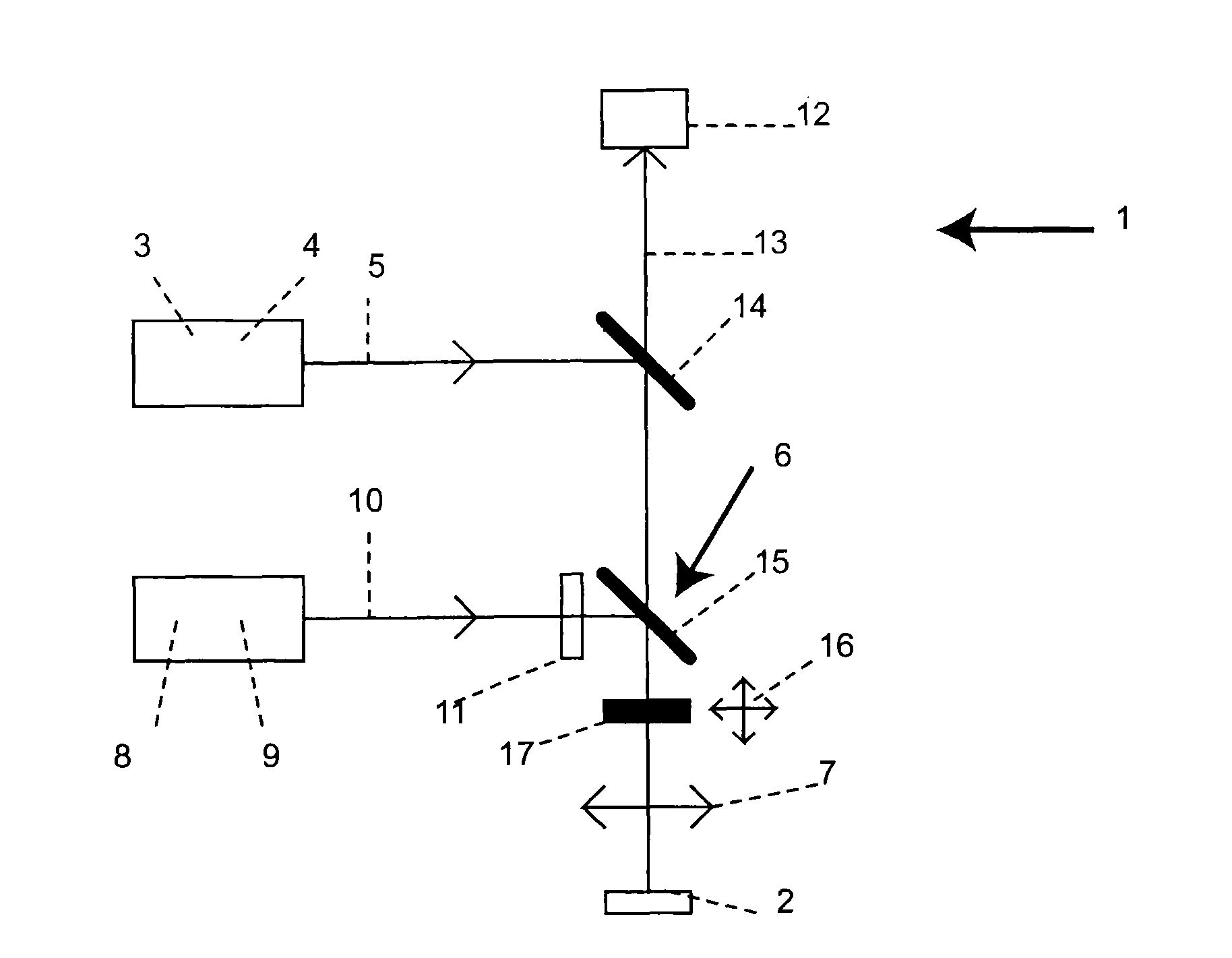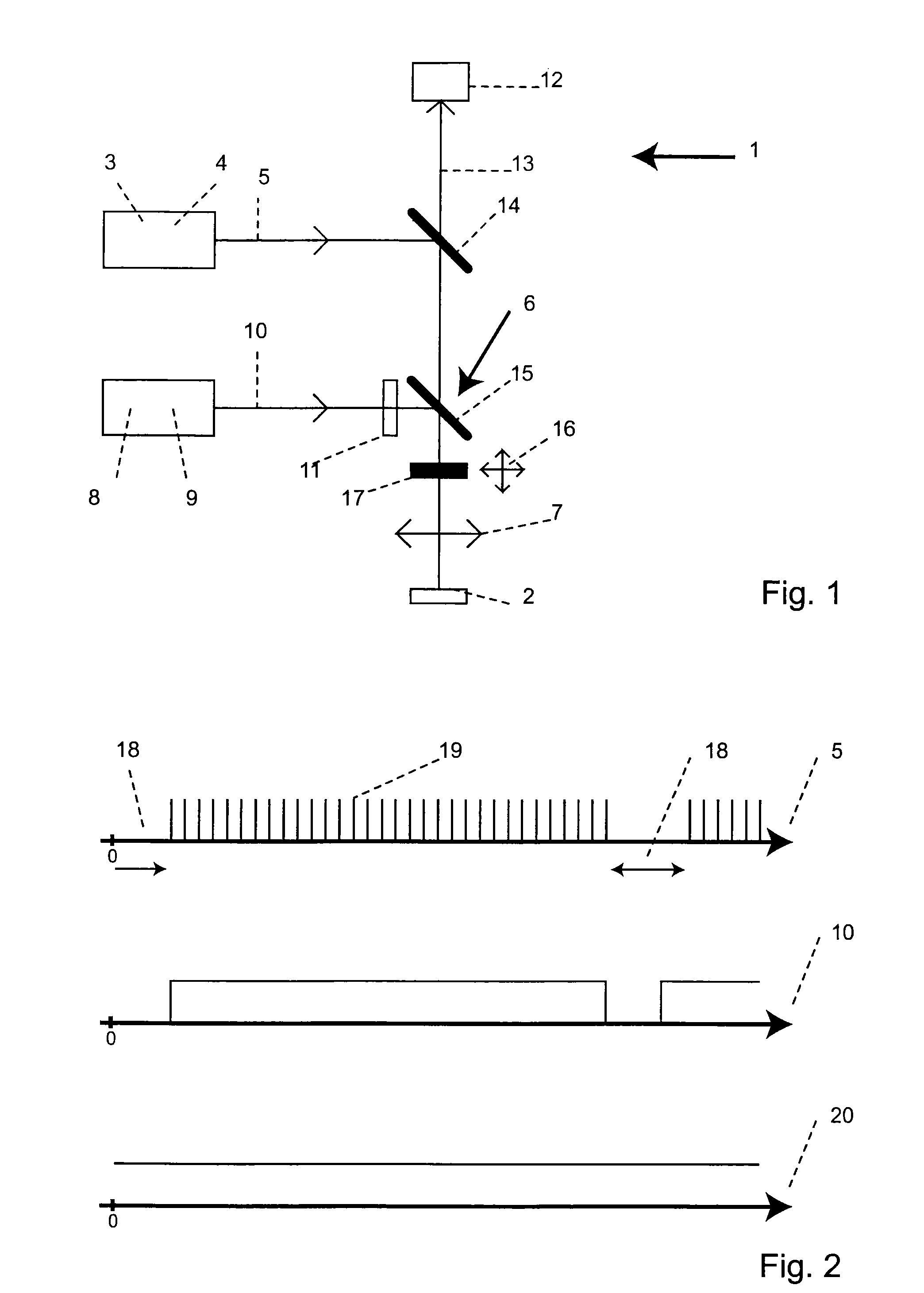STED-fluorescent light microscopy with two-photon excitation
a fluorescence light and microscopy technology, applied in the field of sted-fluorescent light microscopy with two-photon excitation, can solve the problems of high technical effort and financial investment, laser pulses emitted by usual pulse lasers do not display a sufficient pulse duration for sted fluorescence, and achieve high spatial resolution
- Summary
- Abstract
- Description
- Claims
- Application Information
AI Technical Summary
Problems solved by technology
Method used
Image
Examples
Embodiment Construction
[0021]In the new method, the wavelength of the excitation light is selected in such a way that the excitation light excites the fluorescent dye via a multi photon process. Normally, this will be a two-photon process. Whereas the excitation light for the multi photon excitation is pulsed, which has a positive effect on the fluorescence light yield from the multi photon excitation, the de-excitation light which has a shorter wavelength than the excitation light is continuously directed onto the sample during a plurality of pulses of the excitation light. Because of the excitation of the fluorescent dye with the excitation light via a multi photon process, the focal area in which an effective excitation of the fluorescent dye takes place is considerably spatially limited as compared to an excitation via a single photon process. Particularly, with high aperture objectives, the non-linear excitation by the multi photon process is delimited to a focal depth of typically about ˜1 μm which ...
PUM
| Property | Measurement | Unit |
|---|---|---|
| frequency | aaaaa | aaaaa |
| frequency | aaaaa | aaaaa |
| frequency | aaaaa | aaaaa |
Abstract
Description
Claims
Application Information
 Login to View More
Login to View More - R&D
- Intellectual Property
- Life Sciences
- Materials
- Tech Scout
- Unparalleled Data Quality
- Higher Quality Content
- 60% Fewer Hallucinations
Browse by: Latest US Patents, China's latest patents, Technical Efficacy Thesaurus, Application Domain, Technology Topic, Popular Technical Reports.
© 2025 PatSnap. All rights reserved.Legal|Privacy policy|Modern Slavery Act Transparency Statement|Sitemap|About US| Contact US: help@patsnap.com


